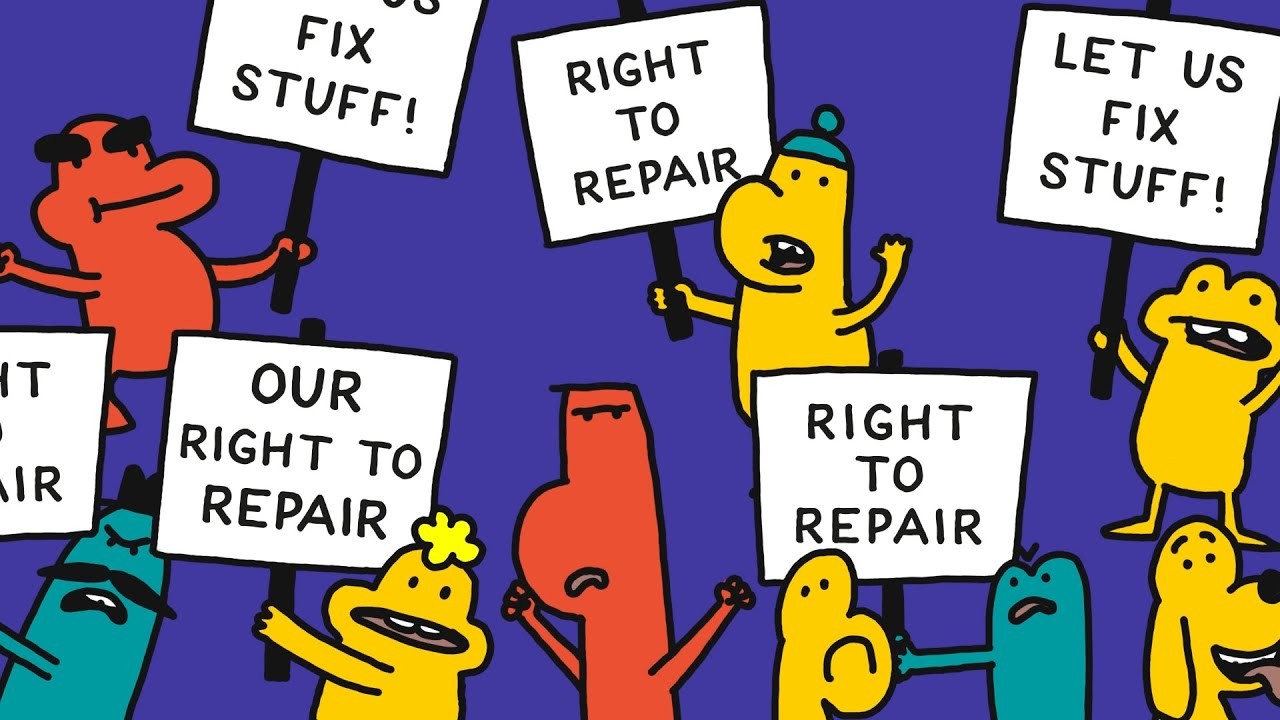In an era increasingly defined by rapid technological advancement and planned obsolescence, a powerful consumer movement has gained significant global momentum: the “Right to Repair.” This movement advocates for consumers’ ability to repair their own products, or have them repaired by independent shops, rather than being forced to rely solely on original manufacturers or their authorized service networks. It’s a pushback against a prevailing culture of disposability, aiming to extend product lifespans, reduce electronic waste, and foster greater consumer autonomy. Understanding where the law stands on this issue is crucial, particularly within the European Union, which has been at the forefront of legislative efforts.
The core tenets of the Right to Repair movement are straightforward: consumers should have access to the necessary tools, parts, and information (like repair manuals and diagnostic software) to fix the products they own. This contrasts sharply with current industry practices where manufacturers often restrict access to proprietary tools, encrypt software, or design products in ways that make independent repair difficult or impossible, sometimes even “pairing” parts to a specific device’s motherboard to prevent third-party replacements. The ultimate goals are manifold: to reduce e-waste, save consumers money on costly replacements, foster a competitive repair market, and promote environmental sustainability by extending the useful life of products.
Within the European Union, significant strides have been made in translating the Right to Repair principles into concrete legislation. The journey began with eco-design regulations that introduced repairability requirements for specific product categories, such as washing machines, dishwashers, refrigerators, and electronic displays. These regulations mandated that manufacturers make certain spare parts and repair information available to professional repairers for a specified period (often 7-10 years) after a product is placed on the market. While a significant step, these initial regulations primarily focused on professional repairers and a limited range of appliances.
However, the legal landscape in the EU has evolved considerably with the recent adoption of the **Right to Repair Directive (R2RD)**, which the European Parliament approved in April 2024 and the Council adopted shortly after. This directive represents a more comprehensive approach, aiming to make repair a more appealing and accessible option for consumers, even after the legal warranty period has expired. Member states, including Germany, now have 24 months from the directive’s entry into force (July 2024) to transpose these new rules into their national laws, meaning they are expected to come into effect by mid-2026.
Key provisions of the R2RD include:
* **Manufacturer’s Obligation to Repair:** For certain products (initially those covered by existing eco-design regulations, with the list expected to expand), manufacturers will be legally obliged to offer repair services for defects that occur or become apparent outside the two-year legal guarantee period. This repair obligation applies unless repair is deemed “impossible.”
* **Extension of Legal Guarantee:** If a consumer chooses to have a product repaired under warranty, the legal guarantee period will be extended by an additional 12 months, further incentivizing repair over replacement.
* **Accessibility of Spare Parts and Information:** Manufacturers must provide spare parts at a reasonable price and make repair instructions and necessary tools accessible to all parties in the repair sector, including independent repairers and consumers. This explicitly prohibits practices that obstruct repair, such as contractual clauses, hardware designs, or software techniques (like part-pairing) that impede the use of second-hand or 3D-printed spare parts by independent repairers.
* **Transparency and Comparability:** A standardized European repair information form will be introduced, allowing consumers to easily assess and compare repair services by detailing the nature of the defect, estimated price, and duration of the repair. An online platform will also be set up at the European level, with national sections, to help consumers find local repair shops, sellers of refurbished goods, and community-led repair initiatives like repair cafés.
* **Promoting Affordability:** Member states are encouraged to implement measures to promote repair affordability, such as repair vouchers, funds, or information campaigns.
While these developments mark a monumental victory for consumer rights and environmental sustainability, the Right to Repair movement still sees areas for further improvement. Critics of the current legislation argue that its scope is still somewhat limited, applying primarily to products already covered by eco-design requirements, leaving a vast array of electronic and household items outside its direct reach. Furthermore, the definition of “reasonable price” for spare parts and services remains somewhat open to interpretation, and the issue of software updates for older devices, which can often render hardware obsolete, requires continued attention.
From an industry perspective, arguments against expansive Right to Repair laws often cite concerns over intellectual property theft, potential safety hazards from unauthorized repairs, the complexity of modern devices requiring specialized training, and the perceived impact on innovation if manufacturers are forced to design for repairability over cutting-edge features. However, proponents counter these arguments by emphasizing consumer choice, environmental benefits, and the economic opportunities for independent repair businesses. The debate is ongoing, but the legislative trend clearly indicates a global shift towards greater consumer empowerment in the lifecycle of their products.
In Germany, the implementation of the EU directive will transform consumer rights and impose new obligations on manufacturers, importers, and distributors. Businesses must now consider the design and programming of new products with reparability in mind, ensuring spare parts are available and that repair information is easily accessible. For consumers, the upcoming changes mean greater transparency, more options, and potentially lower costs for repairing their beloved, but often fragile, electronics and appliances, marking a significant step towards a more circular and sustainable economy.




